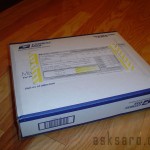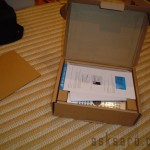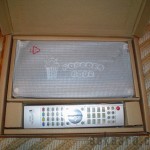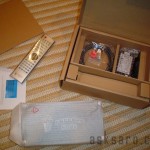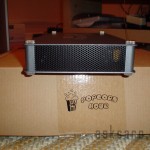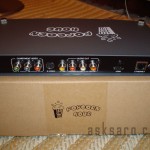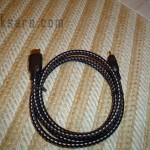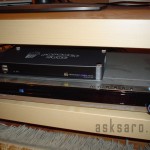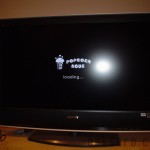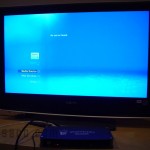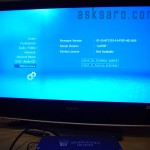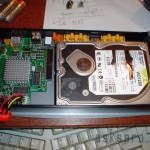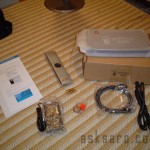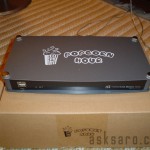For anyone who screwed up the 10.5.5 update (either via Software Update or forgot to remove the AppleIntelCPUPowerManagement.kext) don’t fret. You can remove the problematic extension by booting off your OSX installation media (in my case, Kalyway 10.5.2) and using the Terminal console (under Utilities). This will drop you directly onto the root drive of OSX and allow you to do some modifications.
The next step is to find where your OSX is installed and modify whatever is needed. In my case, it was /Volumes/OSX/. Your volume name may differ. You can figure out what it is by typing “df” at the console and get a list of hard drives with their mount points.
Type in the following (by substituting <OSX> with your volume’s name):
# rm -rf /Volumes/<OSX>/System/Library/Extensions/AppleIntelCPUPowerManagement.kext
Next step is to repair the drive’s permissions. Quit the Terminal console entirely, and go to Disk Utility under Utilities. From there, find your OSX drive and click on “Repair Disk Permissions”. It’ll take a few minutes. Once the repair is complete, time to reboot.
At the boot prompt, type in the following: “-x -v -f”
After a few minutes, OSX should start up in Safe Boot and allow you to login. In my attempt, the desktop and top bar did not appear. Launching any available application in the dock started up the top bar in my case, so I was able to use Spotlight and launch Terminal. Now, we’re going to redo the 10.5.5 update. Hopefully you saved it somewhere reachable, such as your desktop.
First, let’s start by running the following command in a Terminal window:
# while sleep 1 ; do rm -rf /System/Library/Extensions/AppleIntelCPUPowerManagement.kext ; done
While this is running in the background, let’s go ahead and launch the Disk Utility. Now, we’re going to mount the MacOSXUpd10.5.5.dmg (or the Combo or Delta update file). Go to File -> Open and find your .dmg file. It should successfully mount it.
Next step is to launch another Terminal window. This time, we’re going to start the 10.5.5 update package. In the console, type:
# cd /Volumes/Mac\ OS \X 10.5.5\ Update/
(HINT: or type “cd /Volumes/Mac <tab key> for it to autocomplete).
You should be in the mounted .DMG file’s contents. You can go ahead and type:
# open MacOSXUpd10.5.5.pkg
The 10.5.5 update application should begin. Within moments, you’ll notice your desktop reappear and everything seem like it’s back to normal. Once the installation is finished, [b]don’t reboot[/b]! We still have one more step to do.
Go to the Terminal window where we had the “while sleep 1…” command running (it was deleting the AppleIntelCPUPowerManagement.kext for us). Press CTRL + C to terminate the command. Using this window, it’s time to go to the InstallAtStartup directory and do a minor modification. Type:
# pico /System/InstallAtStartup/scripts/1
Look for the following string: “/System/Library/Extensions/Dont Steal Mac OS X.kext”
If you find it, rename it to: “/System/Library/Extensions/dsmos.kext”
If you cannot find it, don’t worry. I didn’t find it in my file, so it’s not mandatory. I added this step for precautionary reasons.
At this point, you can go ahead and modify or reinstall any .kexts your system needs. If you aren’t sure what to do in this step, cross your fingers.
Ok, time to reboot. Once OSX starts to load, you’ll notice that it reboots right away after showing a black screen. Don’t panic, this is normal. Your computer will restart once again. OSX should finally load at this point, and everything should be back to normal.
Tested on:
Kalyway 10.5.2 (base) -> 10.5.3 (Kalyway update) -> 10.5.4 (Software Update)
Asus P5K-VM, BFGTech 8800 GT OC
P5K-VM users will need to reinstall audio drivers after the 10.5.5 update.
Thanks to netkas.org. I hope this guide helps someone out. 🙂
This is for anyone who is getting the “No HPETs available” during OSX bootup.
